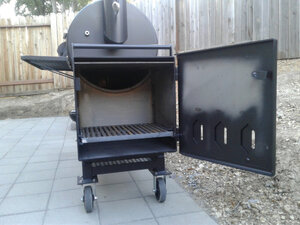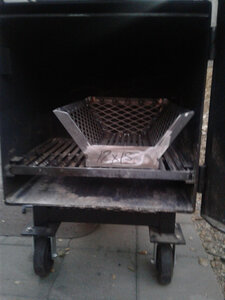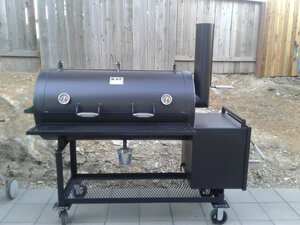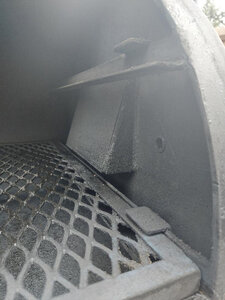Do you have any pics of your firebox?
Sure, here are some pictures of the firebox, the fire basket in the firebox, and the whole smoker. These were taken the day I took delivery of the pit a year and a half ago, so not recent.



Also, here is a picture of where the smoke enters the stack. As you see the entrance to the stack has what I can only describe as a cover which decreases the area at the stack entrance. This is how the pit was designed and I am really beginning to believe this is part of, if not the entire problem. Or at least the reason the pit struggles to get above 325. The builder has told me the cooker is "designed to cook with convective heat and not excessive air flow", which I honestly don't understand, but then I am not a pit builder or fabricator in any way so what do I know. He has also told me I am the only customer who has ever reported any problems with the pit.






